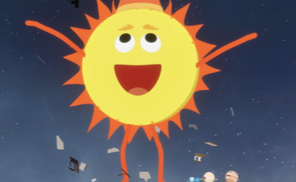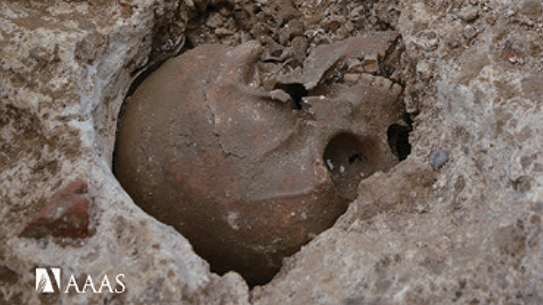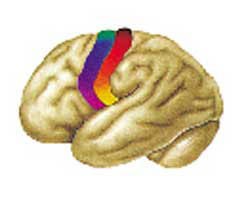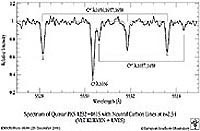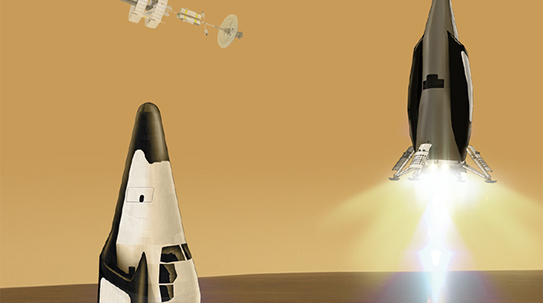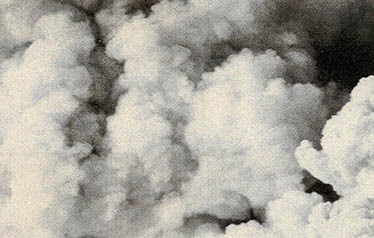
먼지 때문에 최근에 이례적인 달의 식(蝕)현상이 일어났다. 달은 만월이 되었을때 태양으로부터의 빛을 우리에게 가장 밝게 반사시켜 준다. 월식 동안에 지구는 달로 향하는 태양빛의 직진경로를 기리지만, 지구는 대기를 가지고 있기 때문에 어떤 태양빛은 그 안에서 굴절되어 둘레를 굽어 지나간다. 통과해 지나가는 빛의 파(波)는 대개 파장이 긴 적색광이므로 개기식 동안 빛이 가려진 달의 모습은 음산하고 거무스름하게 붉은빛을 띤다.
가장 최근의 월식은 극히 어두웠다. 1991년 필리핀의 피나투보화산의 분출 때문에 현재 지구의 대기는 더 많은 먼지를 가지고 있다. 이번 월식은 달이 하늘에 낮게 있을 때 일어나서 달은 대기의 기장 두터운 층을 통해서 보였다. 월식이 맨하탄 위에서 시작되었을 때에는 지구의 그림자가 달을 남김없이, 심지어는 흔히 보이는 붉은 기운까지 먹어치우는 것 같이 보였다. 개기식 때에는 단지 어렴풋하게 밝은 흔적만 남아 밤하늘에 달이 있었던 위치를 보여주었다. 도시의 광공해 때문에 월식의 희미한 흔적을 찾기 위해 쌍안경을 사용하지 않는다면 달을 발견하기란 거의 불가능하였다.
공기중의 늘어난 먼지는 단지 월식만 변화시키지 않는다. 화산진(塵)은 대기 속에 장시간 머무를 수 있는 아주 작은 알갱이로 이루어져 있다. 피나투보 화산진은 지난2년 동안 지구에 붉은 일몰을 가져다 주었다. 1815년 지금은 인도네시아에 속한 탐보라 해저화산이 분출하여 북반구의 일조량이 감소한 적이 있었기 때문에 그 해는 여름이 없었던 해로 알려져 있다.
먼지는 인간의 삶도 다르게 바꾼다. 먼지는 사람의 호흡계통에 직접적으로 염증을 일으키는 물질이며 또한 각종 알레르기를 일으킨다. 묘하게도 집안 먼지에 의한 알레르기는 그 먼지 자체 때문이 아니라 그 먼지에 살고 있는 진드기 때문에 일어난다. 폭풍 형태로 오는 먼지는 특별히 위험하다. 1930년 대공황의 불행은 중서부의 지역 대부분이 '먼지구덩이'라고 불리는 곳으로 변해감으로써 더 심해졌다. 인디언들이 살고 있을 때 그 목초지의 거대한 평원은 손상되지 않고 비옥한 채로 남아 헤아릴 수 없이 많은 들소와 영양들을 부양하였다. 토착동물에 의한 목축은 목초지를 파괴하지 않았지만 유럽의 이주민들은 쟁기를 사용하여 '평원을 부수기' 시작하였고, 쟁기는 점점 커져 매 10년마다 개량된다. 1차대전 중에는 밀의 수요때문에 농부들은 더 많은 목초지를 갈게 된다. 목초지는 가축들에게 심하게 뜯겨진 채로 버려졌다.
지나친 쟁기질과 과도한 목축은 토양을 연약하게 만들었기 때문에 심한 가뭄이 평원지역을 강타한 1930년에는 드디어 비운이 닥쳤다. 불이 없어 곡식은 죽고 토양을 유지할 아무 것도 없게 되었다. 1933년에 이르기까지 강한 바람이 환상적인 먼지폭풍을 일으킬 때마다 비옥한 표층토양은 날아가 버렸다. 먼지는 대기를 검게 하였고, 건물을 잠기게 하였으며 가축을 죽였고, 대부분의 주민들로 하여금 황폐화된 땅을 떠나도록 하였다. 그 절정기에 이르러, 먼지 구덩이는 6만4천7백50㎢(2만5천평방마일)를 덮었다.
지구상 어디에서나 가뭄과 더불어 푸석푸석한 토양의 상태에서 강한 바람과 합쳐지는 곳이라면 먼지폭풍은 언제나 일어난다. 알래스카의 알칸 고속도로에서 폭풍이 불면 플라스틱 테이프로 봉하여 잠근 여행가방 조차도 먼지의 침입을 받는다. 몇년 전 캘리포니아의 중앙대계곡에서 일어난 심한 먼지폭풍은 주민들로 하여금 학교 문을 닫게 하고 수술용 마스크를 쓰게 하였다. 바람부는 쪽으로 칠해진 차의 페인트는 벗겨졌으며, 차들이 어둠속에서 서로 부딪치는 사고가 일어났다. 먼지는 집안으로 들어가(비록 창문과 방문 틈은 테이프로 막혀 있었지만) 잠긴 옷장속으로 들어갔으며 사람들이 카펫을 지나다닐 때 발자국을 남기게 했다. 날씨는 어두워져 고양이들은 빛이 없을 때와 같이 놀라서 배를 바닥에 붙인 채 살금살금 다녔다.
최근의 보고서에 의하면 이 특별한 먼지폭풍이 콕시디오이디오 마이코시스라는 '계곡열병'을 캘리포니아, 그 중에서도 특히 미국 중부지역으로 전파시킨다고 한다. 이 병은 먼지에 의해서 운반되는 균류(菌類)의 포자에 의해서 일어난다. 피해자는 가볍거나 중등도의 호흡기 감염을 일으키거나, 또는 초기감염 후 진행되어 심한 경우 수개월 혹은 수년 후에 나타나 보다 치명적인 폐렴이 되기도 한다.
먼지폭풍은 현재 기상위성과 지형정찰기에 의해서 관찰된다. 콜로라도주 보울더에 있는 NOAA의 대기자원 실험실에 소속된 데일 A. 질레트에 의하면 미국의 표층토양은 바람에 의해서 1년에 2천만t씩 부식되어 간다고 한다. 먼지의 일부는 사람이 살고 있지 않은 지역에서 발생하지만, 대부분은 일구어진 들판을 바람이 때릴 때나, 나아가서 비포장도로를 차들이 달릴 때에도 일어난다.
대기중의 지나친 먼지, 예를 들어 화산으로부터 나오는 것과 같은 먼지는 일시적으로 온실효과를 방해할 수도 있다. 그것은 또한 파괴적인 화학물질을 축적하여 오존층의 구멍을 더 크게 잠식시킨다.
혼돈이론에 의하면 복잡한 현실세계에서 광범위하고 예측할 수 없는 결과도 작은 변화로부터 시작될 수 있다고 한다. 우리가 아직 화산은 통제할 수 없지만 대기 속으로 날려 버리는 먼지는 보다 더 잘 조절할 수 있다. 우리에게는 전 지구에서 토양을 보존하기 위한 더 나은 농사기술이 필요하며, 그리고 열대우림과 같이 생명에 없어서는 안될 식생의 더 많은 보존도 필요하다.
Thanks to dust, an unusual eclipse of the moon occurred recently. When the moon is full it shines brightly with light it reflects to us from the sun. During a moon eclipse, Earth blocks the direct path of sunlight to the moon, but because Earth has an atmosphere, some sunlight bends through it, curving around the planet. The light waves that get through are mostly of long, red light, so during totality the eclipsed moon has an eerie, dusky red glow.
The latest moon eclipse was extremely dark. Earth's atmosphere presently contains much more dust, due to the eruption of Mount Pinatubo in the Philippines in 1991. The eclipse also occurred when the moon was low in the sky, so it was seen through the thickest part of the atmosphere.
When the eclipse began over Manhattan, the shadow of the Earth seemed to eat away the moon, leaving nothing behind, not even the usual red glow. At totality, only a very faint, lighter smudge remained to show where the moon was located in the night. With the pollution of the city lights, it was almost impossible to find the moon without using binoculars to look for the faint smudge.
Increased dust in the air doesn't just alter eclipses. Volcanic dust is composed of tiny grains that can persist in the atmosphere for a long time. Pinatubo's dust has given Earth red sunsets for the past two years. In 1815, when Tambora erupted in what is now Indonesia, the Northern Hemisphere experienced such a decrease in sunlight that it was known as the year without a summer.
Dust alters human life in other ways. It is a direct irritant to the human respiratory system, and also causes allergies. Oddly enough, allergy to house dust is not to the dust itself but to the dust mites that live in it.
Dust in the form of a storm is particularly dangerous. Back in the 1930s, the miseries of the Great Depression were compounded when much of the Midwest turned into what was called the Dust Bowl. When the Indians lived there, the great sweeps of grasslands remained intact and fertile, supporting immense herds of bison and pronghorns.
Grazing by the native animals did not destroy the grasslands, but European settlers did by using plows to "break the plains," the plows getting bigger and better each decade. During World War Ⅰ, the demand for wheat prompted farmers to plow under more and more grazing land. What was left of the grasslands was severely overgrazed by livestock.
Overplowing and overgrazing rendered the soil so fragile that when severe drought hit the plains states in 1930, doom struck. With no water, crops died, and there was nothing to hold the soil. By 1933, fertile top soil was blowing away as powerful winds created fantastic dust storms. Dust blackened the air, submerged buildings, killed livestock and forced most of the population to evacuate the ruined land. At its peak, the dust bowl covered 64,750 square kilometers (25,000 square miles).
Dust storms still occur around the globe, wherever conditions of drought and loose soil combine with strong winds. During a dust storm on the Alcan Highway in Alaska, a locked suitcase covered with taped plastic was still invaded by dust. A few years ago, a severe dust storm in California's Great Central Valley forced people to close schools and wear surgical masks. Paint was scoured off the windward sides of cars, and there were accidents as vehicles crashed into each other in the darkness. Dust got into houses (even with windows and doors taped shut), entered closed cabinets, and left footprints when people walked across carpets. It was so dark that cats acted as frightened as they do in an eclipse, slinking around with their bellies scraping the ground.
Recent reports indicate that this particular dust storm spread coccidioidomycosis, or "Valley fever," to California, especially in the central region. This disease is caused by fungus spores carried in dust. Victims can have a light upper or middle respiratory infection, pneumonia, or a progressive and more lethal form that can appear even months or years after the initial infection.
Dust storms are now monitored by weather satellites and geological survey planes. According to Dale A. Gillette, at the National Oceanic and Atmospheric Administration's Air Resources Laboratory in Boulder, Colo., top soil in the United States erodes by wind at the rate of 20 million tons a year. Some of the dust is from areas not used by humans, but most of it is caused when wind hits plowed fields or even when cars drive on unpaved roads.
Excessive atmospheric dust, like that from volcanoes, may temporarily mask the greenhouse effect. It can also accumulate destructive chemicals and thus help eat a bigger hole in the ozone layer.
Chaos theory shows that in the complicated real world, large and unpredictable effects can come from small changes. We can't control volcanoes yet, But we can certainly do better at controlling the dust we help send into our air. We need better farm techniques to preserve soil all over Earth, and more conservation of vital vegetation like rain forests.
(C)1993, Los Angeles Times Syndicate





